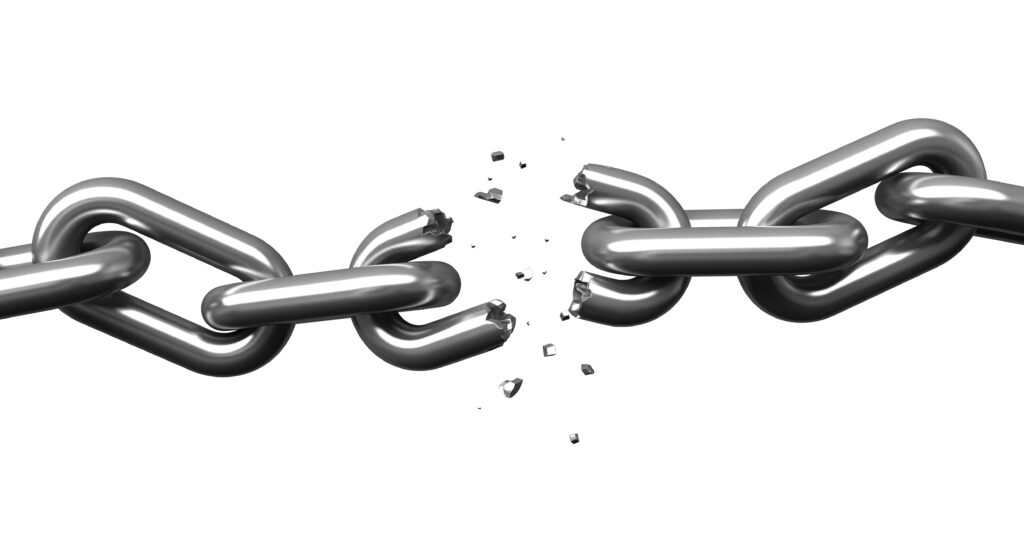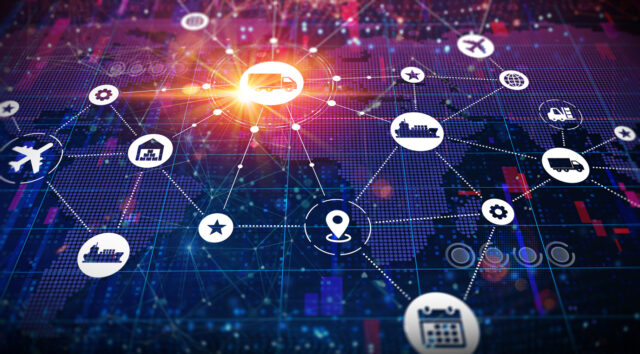Digital transformation is a continuing journey of change with no set final destination. This makes predicting tomorrow a challenge when no one has a crystal ball to hand.
After a difficult few years for most businesses following a disruptive pandemic and now battling a cost-of-living crisis, many enterprises are increasingly leveraging new types of technology to gain an edge in a disruptive world.
With this in mind, here are what experts predict for the next 12 months…
1. Process Mining

Sam Attias, Director of Product Marketing at Celonis, expects to see a rise in the adoption of process mining as it evolves to incorporate automation capabilities. He says process mining has traditionally been “a data science done in isolation” which helps companies identify hidden inefficiencies by extracting data and visually representing it.
“It is now evolving to become more prescriptive than descriptive and will empower businesses to simulate new methods and processes in order to estimate success and error rates, as well as recommend actions before issues actually occur,” says Attias. “It will fix inefficiencies in real-time through automation and execution management.”
2. The evolution of social robots

Gabriel Aguiar Noury, Robotics Product Manager at Canonical, anticipates social robots to return this year. After companies such as Sony introduced robots like Poiq, Aguiar Noury believes it “sets the stage” for a new wave of social robots.
“Powered by natural language generation models like GPT-3, robots can create new dialogue systems,” he says. “This will improve the robot’s interactivity with humans, allowing robots to answer any question.

“Social robots will also build narratives and rich personalities, making interaction with users more meaningful. GPT-3 also powers Dall-E, an image generator. Combined, these types of technologies will enable robots not only to tell but show dynamic stories.”
3. The rebirth of new data-powered business applications

Christian Kleinerman, Senior Vice President of Product at Snowflake, says there is the beginning of a “renaissance” in software development. He believes developers will bring their applications to central combined sources of data instead of the “traditional approach” of copying data into applications.

“Every single application category, whether it’s horizontal or specific to an industry vertical, will be reinvented by the emergence of new data-powered applications,” affirms Kleinerman. “This rise of data-powered applications will represent massive opportunities for all different types of developers, whether they’re working on a brand-new idea for an application and a business based on that app, or they’re looking for how to expand their existing software operations.”
4. Application development will become a two-way conversation

Adrien Treuille, Head of Streamlit at Snowflake, believes application development will become a two-way conversation between producers and consumers. It is his belief that the advent of easy-to-use low-code or no-code platforms are already “simplifying the building” and sharing of interactive applications for tech-savvy and business users.
“Based on that foundation, the next emerging shift will be a blurring of the lines between two previously distinct roles — the application producer and the consumer of that software.”
He adds that application development will become a collaborative workflow where consumers can weigh in on the work producers are doing in real-time. “Taking this one step further, we’re heading towards a future where app development platforms have mechanisms to gather app requirements from consumers before the producer has even started creating that software.”
5. The Metaverse

Paul Hardy, EMEA Innovation Officer at ServiceNow, says he expects business leaders to adopt technologies such as the metaverse in 2023. The aim of this is to help cultivate and maintain employee engagement as businesses continue working in hybrid environments, in an increasingly challenging macro environment.

“Given the current economic climate, adoption of the metaverse may be slow, but in the future, a network of 3D virtual worlds will be used to foster meaningful social connections, creating new experiences for employees and reinforcing positive culture within organisations,” he says. “Hybrid work has made employee engagement more challenging, as it can be difficult to communicate when employees are not together in the same room.
“Leaders have begun to see the benefit of hosting traditional training and development sessions using VR and AI-enhanced coaching. In the next few years, we will see more workplaces go a step beyond this, for example, offering employees the chance to earn recognition in the form of tokens they can spend in the real or virtual world, gamifying the experience.”
6. The year of ESG?

Cathy Mauzaize, Vice President, EMEA South, at ServiceNow, believes 2023 could be the year that environmental, social and corporate governance (ESG) is vital to every company’s strategy.
“Failure to engage appropriate investment in ESG strategies could plunge any organisation into a crisis,” she says. “Legislation must be respected and so must the expectations of employees, investors and your ecosystem of partners and customers.
“ESG is not just a tick box, one and done, it’s a new way of business that will see us through 2023 and beyond.”
7. Macro Trends and Redeploying Budgets for Efficiency

Ulrik Nehammer, President, EMEA at ServiceNow, says organisations are facing an incredibly complex and volatile macro environment. Nehammer explains as the world is gripped by soaring inflation, intelligent digital investments can be a huge deflationary force.

“Business leaders are already shifting investment focus to technologies that will deliver outcomes faster,” he says. “Going into 2023, technology will become increasingly central to business success – in fact, 95% of CEOs are already pursuing a digital-first strategy according to IDC’s CEO survey, as digital companies deliver revenue growth far faster than non-digital ones.”
8. Organisations will have adopted a NaaS strategy

David Hughes, Aruba’s Chief Product and Technology Officer, believes that by the end of 2023, 20% of organisations will have adopted a network-as-a-service (NaaS) strategy.

“With tightening economic conditions, IT requires flexibility in how network infrastructure is acquired, deployed, and operated to enable network teams to deliver business outcomes rather than just managing devices,” he says. “Migration to a NaaS framework enables IT to accelerate network modernisation yet stay within budget, IT resource, and schedule constraints.
“In addition, adopting a NaaS strategy will help organisations meet sustainability objectives since leading NaaS suppliers have adopted carbon-neutral and recycling manufacturing strategies.”
9. Think like a seasonal business

According to Patrick Bossman, Product Manager at MariaDB corporation, he anticipates 2023 to be the year that the ability to “scale out on command” is going to be at the fore of companies’ thoughts.
“Organisations will need the infrastructure in place to grow on command and scale back once demand lowers,” he says. “The winners in 2023 will be those who understand that all business is seasonal, and all companies need to be ready for fluctuating demand.”
10. Digital platforms need to adapt to avoid falling victim to subscription fatigue

Demed L’Her, Chief Technology Officer at DigitalRoute, suggests what the subscription market is going to look like in 2023 and how businesses can avoid falling victim to ‘subscription fatigue’. L’Her says there has been a significant drop in demand since the pandemic.
“Insider’s latest research shows that as of August, nearly a third (30%) of people reported cancelling an online subscription service in the past six months,” he reveals. “This is largely due to the rising cost of living experienced globally that is leaving households with reduced budgets for luxuries like digital subscriptions. Despite this, the subscription market is far from dead, with most people retaining some despite tightened budgets.
“However, considering the ongoing economic challenges, businesses need to consider adapting if they are to be retained by customers in the long term. The key to this is ensuring that the product adds value to the life of the customer.”
11. Waking up to browser security

Jonathan Lee, Senior Product Manager at Menlo Security, points to the web browser being the biggest attack surface and suggests the industry is “waking up” to the fact of where people spend the most time.

“Vendors are now looking at ways to add security controls directly inside the browser,” explains Lee. “Traditionally, this was done either as a separate endpoint agent or at the network edge, using a firewall or secure web gateway. The big players, Google and Microsoft, are also in on the act, providing built-in controls inside Chrome and Edge to secure at a browser level rather than the network edge.
“But browser attacks are increasing, with attackers exploiting new and old vulnerabilities, and developing new attack methods like HTML Smuggling. Remote browser isolation is becoming one of the key principles of Zero Trust security where no device or user – not even the browser – can be trusted.”
12. The year of quantum-readiness

Tim Callan, Chief Experience Officer at Sectigo, predicts that 2023 will be the year of quantum-readiness. He believes that as a result of the standardisation of new quantum-safe algorithms expected to be in place by 2024, this year will be a year of action for government bodies, technology vendors, and enterprise IT leaders to prepare for the deployment.

“In 2022, the US National Institute of Standards and Technologies (NIST) selected a set of post-quantum algorithms for the industry to standardise on as we move toward our quantum-safe future,” says Callan.
“In 2023, standards bodies like the IETF and many others must work to incorporate these algorithms into their own guidelines to enable secure functional interoperability across broad sets of software, hardware, and digital services. Providers of these hardware, software, and service products must follow the relevant guidelines as they are developed and begin preparing their technology, manufacturing, delivery, and service models to accommodate updated standards and the new algorithms.”
13. AI: fewer keywords, greater understanding

AI expert Dr Pieter Buteneers, Director of AI and Machine Learning at Sinch, expects artificial intelligence to continue to transition away from keywords and move towards an increased level of understanding.

“Language-agnostic AI, already existent within certain AI and chatbot platforms, will understand hundreds of languages — and even interchange them within a single search or conversation — because it’s not learning language like you or I would,” he says. “This advanced AI instead focuses on meaning, and attaches code to words accordingly, so language is more of a finishing touch than the crux of a conversation or search query.
“Language-agnostic AI will power stronger search results — both from external (the internet) and internal (a company database) sources — and less robotic chatbot conversations, enabling companies to lean on automation to reduce resources and strain on staff and truly trust their AI.”
14. Rise in digital twin technology in the enterprise

John Hill, CEO and Founder of Silico, recognises the growing influence digital twin technology is having in the market. Hill predicts that in the next 20 years, there will be a digital twin of every complex enterprise in the world and anticipates the next generation of decision-makers will routinely use forward-looking simulations and scenario analytics to plan and optimise their business outcomes.

“Digital twin technology is one of the fastest-growing facets of industry 4.0 and while we’re still at the dawn of digital twin technology,” he explains. “Digital twins will have huge implications for unlocking our ability to plan and manage the complex organisations so crucial for our continued economic progress and underpin the next generation of Intelligent Enterprise Automation.”
15. Broader tech security

With an exponential amount of data at companies’ fingertips, Tricentis CEO, Kevin Thompson says the need for investment in secure solutions is paramount.

“The general public has become more aware of the access companies have to their personal data, leading to the impending end of third-party cookies, and other similar restrictions on data sharing,” he explains. “However, security issues still persist. The persisting influx of new data across channels and servers introduces greater risk of infiltration by bad actors, especially for enterprise software organisations that have applications in need of consistent testing and updates. The potential for damage increases as iterations are being made with the expanding attack surface.
“Now, the reality is a matter of when, not if, your organisation will be the target of an attack. To combat this rising security concern, organisations will need to integrate security within the development process from the very beginning. Integrating security and compliance testing at the upfront will greatly reduce risk and prevent disruptions.”
16. Increased cyber resilience

Michael Adams, CISO at Zoom, expects an increased focus on cyber resilience over the next 12 months. “While protecting organisations against cyber threats will always be a core focus area for security programs, we can expect an increased focus on cyber resilience, which expands beyond protection to include recovery and continuity in the event of a cyber incident,” explains Adams.
“It’s not only investing resources in protecting against cyber threats; it’s investing in the people, processes, and technology to mitigate impact and continue operations in the event of a cyber incident.”
17. Ransomware threats

As data leaks become increasingly common place in the industry, companies face a very real threat of ransomware. Michal Salat, Threat Intelligence Director at Avast, believes the time is now for businesses to protect themselves or face recovery fees costing millions of dollars.

“Ransomware attacks themselves are already an individual’s and businesses’ nightmare. This year, we saw cybergangs threatening to publicly publish their targets’ data if a ransom isn’t paid, and we expect this trend to only grow in 2023,” says Salat. “This puts people’s personal memories at risk and poses a double risk for businesses. Both the loss of sensitive files, plus a data breach, can have severe consequences for their business and reputation.”
18. Intensified supply chain attacks

Dirk Schrader, VP of security research at Netwrix, believes supply chain attacks are set to increase in the coming year. “Modern organisations rely on complex supply chains, including small and medium businesses (SMBs) and managed service providers (MSPs),” he says.

“Adversaries will increasingly target these suppliers rather than the larger enterprises knowing that they provide a path into multiple partners and customers. To address this threat, organisations of all sizes, while conducting a risk assessment, need to take into account the vulnerabilities of all third-party software or firmware.”
19. A greater need to manage volatility

Paul Milloy, Business Consultant at Intradiem, stresses the importance of managing volatility in an ever-moving market. Milloy believes bosses can utilise data through automation to foresee potential problems before they become issues.

“No one likes surprises. Whilst Ben Franklin suggested nothing can be said to be certain, except death and taxes, businesses will want to automate as many of their processes as possible to help manage volatility in 2023,” he explains. “Data breeds intelligence, and intelligence breeds insight. Managers can use the data available from workforce automation tools to help them manage peaks and troughs better to avoid unexpected resource bottlenecks.”
20. A human AI co-pilot will still be needed

Artem Kroupenev, VP of Strategy at Augury, predicts that within the next few years, every profession will be enhanced with hybrid intelligence, and have an AI co-pilot which will operate alongside human workers to deliver more accurate and nuanced work at a much faster pace.

“These co-pilots are already being deployed with clear use cases in mind to support specific roles and operational needs, like AI-driven solutions that enable reliability engineers to ensure production uptime, safety and sustainability through predictive maintenance,” he says. “However, in 2023, we will see these co-pilots become more accurate, more trusted and more ingrained across the enterprise.
“Executives will better understand the value of AI co-pilots to make critical business decisions, and as a key competitive differentiator, and will drive faster implementation across their operations. The AI co-pilot technology will be more widespread next year, and trust and acceptance will increase as people see the benefits unfold.”
21. Building the right workplace culture

Harnessing a positive workplace culture is no easy task but in 2023 with remote and hybrid working now the norm, it brings with it new challenges. Tony McCandless, Chief Technology Officer at SS&C Blue Prism, is well aware of the role organisational culture can play in any digital transformation journey.
“Workers are the heart of an organisation, so without their buy in, no digital transformation initiative stands a chance of success,” explains McCandless. “Workers drive home business objectives, and when it comes to digital transformation, they are the ones using, implementing, and sometimes building automations. Curiosity, innovation, and the willingness to take risks are essential ingredients to transformative digitalisation.
“Businesses are increasingly recognising that their workers play an instrumental role in determining whether digitalisation initiatives are successful. Fostering the right work environment will be a key focus point for the year ahead – not only to cultivate buy-in but also to improve talent retention and acquisition, as labor supply issues are predicted to continue into 2023 and beyond.”
22. Cloud cover to soften recession concerns

Amid a cost-of-living crisis and concerns over any potential recession as a result, Daniel Thomasson, VP of Engineering and R&D at Keysight Technologies, says more companies will shift data intensive tasks to the cloud to reduce infrastructure and operational costs.

“Moving applications to the cloud will also help organisations deliver greater data-driven customer experiences,” he affirms. “For example, advanced simulation and test data management capabilities such as real-time feature extraction and encryption will enable use of a secure cloud-based data mesh that will accelerate and deepen customer insights through new algorithms operating on a richer data set. In the year ahead, expect the cloud to be a surprising boom for companies as they navigate economic uncertainty.”
23. IoT devices to scale globally

Dr Raullen Chai, CEO and Co-Founder of IoTeX, recognises a growing trend in the usage of IoT devices worldwide and believes connectivity will increase significantly.

“For decades, Big Tech has monopolised user data, but with the advent of Web3, we will see more and more businesses and smart device makers beginning to integrate blockchain for device connectivity as it enables people to also monetise their data in many different ways, including in marketing data pools, medical research pools and more,” he explains. “We will see a growth in decentralised applications that allow users to earn a modest additional revenue from everyday activities, such as walking, sleeping, riding a bike or taking the bus instead of driving, or driving safely in exchange for rewards.
“Living healthy lifestyles will also become more popular via decentralised applications for smart devices, especially smart watches and other health wearables.”











